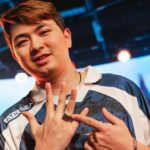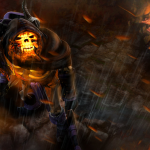Dota 2 is an incredibly complex game, and seemingly small changes can have a massive impact on the meta. Today, we focus on heroes who are suddenly gaining popularity and success, seemingly out of nowhere.
Our long-time readers know my personal infatuation with Spectre. However, even as a long-time Spectre fan, I don’t fully understand why she suddenly improved. One reason is the change to all Trinket items. Since they no longer upgrade at the 25-minute mark, overall survivability has decreased, especially for support heroes. This means Spectre is better at pickoffs, especially against squishier supports, leading to better economy and level progressions, which results in more aggressive potential later on.
The offlane meta has also shifted. We see less aura builders and more aggressive, less tanky heroes. Spectre is designed as a glass cannon hunter, with Dispersion, Aghanim’s Shard, potential Blade Mail and Radiance, and built-in global gap-closer making her perfect for taking down squishy, high damage output targets. She benefits from accelerating through support kills without dealing with early group-ups, making her naturally more suited to the current meta.
Spectre also sees a return to the Badman build by going early Urn of Shadows, increasing survivability and sustain, gaining extra damage, and crucially, extra mana regeneration for her Spectral Dagger. This isn’t a good farming tool, but it’s her only option until she starts getting enemy support kills.
The hero got nerfed in 7.37e but remains one of the best position four supports in the current meta. The reasons are similar to Spectre’s resurgence: less deathball, more split and farm, and Bounty Hunter excels at setting up solo kills. The extra gold and Truesight consumables create a powerful economic disparity when BH is played well.
Bounty Hunter is infinitely adaptable, with many items he can realistically afford. From game to game, it can vary from default defensive Solar Crest to aggressive Orchid Malevolence. His flexibility in solving various problems while having the money to do so makes him unique but requires game sense.
Night Stalker, another non-teamfight hero, is making a comeback due to overall meta changes. Since the introduction of facets, his laning stage improved with Night Reign forcing night time from the start of the game, eliminating his weakness. The result is a highly aggressive hero who can attack backlines and provide his team with a massive tactical advantage through flying vision.
Night Stalker frequently forces supports to make inefficient decisions, such as using Blink Dagger and Black King Bar. Phylactery is a common purchase for scaling potential later on and helping with early game kills, while Shard is great for sustain and farming speed. However, make sure not to delay key items with early Harpoon or Khanda purchases, as this will result in a massive tempo loss.
Despite being minor, 7.37e had a massive impact on the overall meta. Players are tired of playing the same style of Dota and are experimenting more, resulting in a chaotic and enjoyable game state. Between these changes and the Crownfall mini-games, there are no reasons to complain about the lack of big balance patches. Valve has taken their time to go beyond expectations, so let them cook in peace after a well-deserved rest during the holidays. More great things are sure to come.






